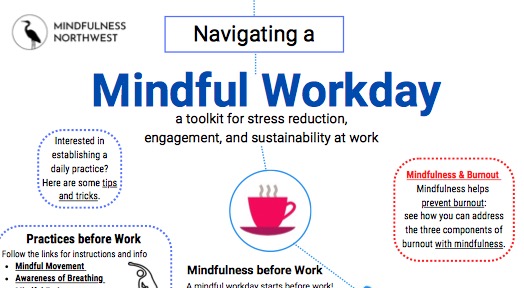
Photo by Caroline van Oijen
I invite you to become like a bee, moving from flower to flower. In this case, the “flower” being anything beautiful or interesting that draws your attention. Engage your senses to connect with delight: the sun on your cheek, the grass on your feet, honeysuckle in bloom, a chickadee’s song. Allow yourself to be drawn along from pleasure to pleasure, taking each one in, moving on only when the next enticement calls.
If you’ve attended one of our day-long or multi-day retreats, you might know the Sense & Savor Walk. As you can imagine, this meditation is a hit! At a recent one-day retreat, a participant shared that she had loved the Sense & Savor Walk. It brought joy and a reconnection with childlike wonder. She shared, “This practice is so simple. I could do this all the time. But I don’t. Why not? I’d like to try.”
I couldn’t agree with her more. So, I propose that for the next hour, or day, or for all of August, we Sense & Savor . . . Everything!

Photo by Mi Pham
Savoring is mindfulness of pleasant experience. This is allowed. In fact, we need it. Pleasure builds resilience. In Mindful Self-Compassion and Mindfulness-Based Stress Reduction we talk about our brain’s negativity bias: our minds are Teflon for the positive and Velcro for the negative. This trait can be evolutionarily adaptive, but it can also cloud our vision, showing us the world through mud-colored glasses. Savoring can help us balance out this bias. We’ve got to PRACTICE pleasure, delight, and joy to gain a more balanced (and therefore accurate) view of the world. By leaning into savoring, we’re both helping ourselves in the moment, and changing our brains so that our default mode is closer to delight.
You may be thinking, That’s all well and good, Carolyn, but I can’t just wander around like a bee all day. I have things to do! May I present: Sense & Savor Chores! When life’s chores come knocking, I like to challenge myself: Can I find pleasure in this mundane task? Often I can find something: warm water for washing dishes, or the reflection of light on window glass. This has become a bit of a game with me. In any situation, especially if I’m feeling grumpy, I’ll ask myself: Are there pleasant moments here? Often there is a way to tap into some sensual delight, however small. Experiment and see what you find.
Once you orient toward pleasure, you might find there are many simple opportunities to savor throughout the day. A hot shower, a square of chocolate, a hug. What is it for you? Cool air flowing in the windows at night. Seeing the art on your walls, or the moon. Let this goodness affect you. Breathe it in. Don’t miss it.

Photo by Anatoly Ramonov
Vipassana teacher Joseph Goldstein recommends doing this within our meditation practice. When you notice the mind wandering, allow yourself to enjoy the feeling of coming back into awareness. Notice what it feels like. Delight in this return, this coming home to attention. Affirming this wholesome action strengthens our ability to focus the mind.
Savoring also works when receiving kind words. My friend calls it “Taking in the good.” She’ll practice it when receiving a compliment, or when something goes well. She closes her eyes and smiles, breathes, basking in the positive. She might say, “Mmmmmmm.” Then she’ll say, “Thank you. I’m taking in the good.” It’s not only lovely for her, but pretty wonderful for me, who offered the words, to see them being so warmly received.
Similarly, if you have a garden or a project at work or home (cleaning the bathroom!), you might allow yourself a moment to pause when the weeding or presentation or scrubbing is complete. Instead of moving right on to the next thing, let yourself savor the fruits of your labor. Take in the good.
A few pitfalls to watch out for: Compulsive or unwholesome habits, or a desire for things to be perfect don’t help. We don’t want to get so focused on pleasure that we become trapped in aversion to anything UNpleasant. Rather, it’s allowing ourselves to see the good that’s already here, noticing it as it arises, and taking it in. We know that just like everything else, it will fade. So in this moment of pleasantness, let’s take it in and be nourished.

Photo by Ben White
The Sense & Savor practice may feel frivolous or self-indulgent, hard to employ when there’s so much suffering in the world. Let me be clear: Savoring is not toxic positivity, or denial. It’s not pushing anything away. It is embracing the good that is here, and allowing it to affect us – because the good is here, too. Right alongside the hurt.
Audre Lorde, Ross Gay, and many other Black poets and thinkers have affirmed the radical power of claiming joy in the face of suffering. For people who experience oppression, it can be an act of resistance and empowerment. Pulitzer Prize winner and beloved poet Mary Oliver, who experienced her share of suffering, puts it this way in “Don’t Hesitate”:
If you suddenly and unexpectedly feel joy, don’t hesitate. Give in to it. . . Don’t be afraid of its plenty. Joy is not made to be a crumb.
I invite you to lower the bar for delight. Can you find it right where you are? And when it arises, can you allow yourself to lean into pleasure? Put Sense & Savor on your To Do list, and see what happens for you.
Wishing you a feast (so much more than a crumb!) of joy,
Carolyn

